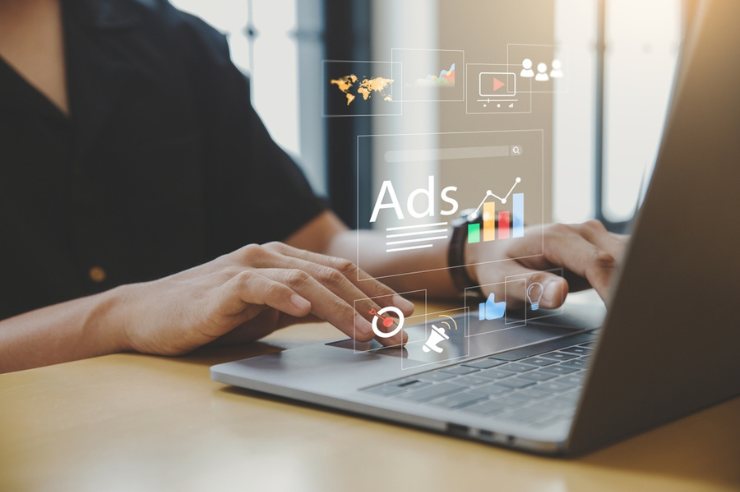Launching a successful marketing campaign requires strategic planning and timing. One of the most critical factors to consider is the duration of your consideration campaign ads. In this blog, we will explore the optimal length for running these ads.
Importance of Timing in Consideration Campaign Ads

Timing is everything in advertising. The duration of your campaign can significantly impact its effectiveness. Running ads for too short a period might not give your audience enough time to engage, while a prolonged campaign can lead to ad fatigue. Finding the right balance is crucial for maximizing your return on investment (ROI).
The consideration phase is when potential customers are evaluating your product or service. This stage follows the awareness phase, where they first learn about your brand. During consideration, they compare your offerings with competitors, read reviews, and seek more detailed information. During this phase, ads must provide compelling reasons for choosing your product.
Optimal Duration for Consideration Campaign Ads
Research indicates that the optimal duration for consideration campaign ads ranges from 6 to 8 weeks. This timeframe allows enough exposure to influence potential customers without overwhelming them. Studies show that campaigns within this range achieve higher engagement rates and conversion rates.
Industries with inherently longer sales cycles, such as B2B services or high-value consumer goods, benefit from extended campaigns. These campaigns must nurture leads over time, providing consistent engagement to move prospects through the sales funnel.
Factors Influencing Duration
Several factors can influence the ideal length of your consideration campaign, including:
- Product Complexity: More complex products may require longer campaigns to educate potential buyers.
- Sales Cycle Length: Industries with longer sales cycles, such as B2B services, might benefit from extended campaigns.
- Audience Size: Larger target audiences may need more time to ensure adequate reach and frequency.
- Advertising Channels: Different platforms (e.g., social media, search engines, display ads) might necessitate varying campaign lengths for optimal results, as discussed later.
Comparing Different Timeframes: Pros, Cons, and Applications
When deciding how many weeks for consideration campaign ads to run, it’s essential to compare various timeframes to find the best fit for your goals. Here, we break down the pros, cons, and potential applications of short, optimal, and long campaigns:
Short Campaigns (1-4 Weeks)
Pros
- Immediate Impact: Can create a quick surge in brand awareness and engagement.
- Cost-Effective: Lower overall costs due to shorter duration.
- Ideal for Promotions: Effective for short-term promotions or sales events.
Cons
- Limited Reach: May not reach the full target audience.
- Insufficient Engagement: Not enough time to build a strong connection or influence consideration deeply.
Applications
- Flash sales
- Seasonal promotions
- New product launches with high initial buzz
Optimal Campaigns (6-8 Weeks)
Pros
- Balanced Exposure: Sufficient time for multiple touchpoints without causing ad fatigue.
- Higher Engagement: Allows for deeper audience engagement and better brand recall.
- Improved Conversion Rates: Adequate time for consumers to move through the decision-making process.
Cons
- Moderate Costs: Requires a more significant budget than shorter campaigns.
- Resource Intensive: Needs continuous monitoring and optimization.
Applications
- Consideration phase marketing
- Product education and comparison
- Building sustained interest in new or complex products
Long Campaigns (10+ Weeks)
Pros
- Deep Brand Integration: Ensures that the brand becomes a regular part of the consumer’s environment.
- Ideal for Long Sales Cycles: Supports industries with extended decision-making processes.
Cons
- Ad Fatigue: Higher risk of the audience becoming tired of the ads.
- High Costs: Significant budget requirements over a long period.
- Diminishing Returns: Additional exposure yields minimal incremental benefit after a certain point.
Applications
- High-value B2B services
- Long-term brand-building initiatives
- Products with a long consideration phase (e.g., real estate, automotive)
Timing Based on Advertising Channel
Different platforms and their typical user behaviors can influence the optimal campaign length. For example:
- Social Media: Shorter bursts of 6-8 weeks work well due to the fast-paced nature of social feeds.
- Email Marketing: May require a longer duration to account for varied open rates and engagement times.
- Search Engine Marketing (SEM): Continuous, longer campaigns can capture ongoing search queries and intent.
Benefits of a Well-Timed Consideration Campaign

A well-timed consideration campaign can be the difference between success and failure in marketing. Here are the specific advantages of a well-timed campaign:
Enhanced Brand Recall
- Multiple Touchpoints: Consumers need to see an advertisement numerous times before it sticks. The “Rule of 7” suggests that at least seven exposures are necessary for a message to be remembered. A 6-8 week campaign ensures your audience sees your ad frequently enough to build strong recall.
- Memory Retention: Spaced repetition over weeks rather than days significantly improves long-term memory retention, which means your brand stays top-of-mind long after the campaign ends.
Increased Engagement
- Consistent Interaction: A campaign spanning 6-8 weeks keeps your audience engaged consistently. Campaigns of this length generally see higher engagement rates compared to shorter campaigns.
- Content Variety: Spreading your campaign over several weeks allows you to vary your content, keeping it fresh and interesting. Diverse content types, such as videos, infographics, and blog posts, can boost engagement significantly.
Improved Conversion Rates
- Sufficient Consideration Time: Consumers often need time to move from awareness to decision. A well-timed campaign provides this window, leading to higher conversion rates. Typically, campaigns lasting 6-8 weeks see better conversion rates than those under 4 weeks.
- Informed Decision-Making: Longer campaigns give consumers the time they need to research and compare products. Well-informed consumers are more likely to convert.
Cost Efficiency
- Optimal Spend: A 6-8 week campaign strikes a balance between cost and impact. Prolonged campaigns can drain budgets without significant additional benefits, while shorter campaigns might not achieve the desired reach and frequency.
- Reduced Waste: Targeted, well-timed campaigns reduce ad spend waste by focusing on the most receptive audiences. Programmatic advertising tools help optimize ad delivery, ensuring your message reaches potential customers at the right time.
Audience Insights
- Data Collection: A well-timed campaign provides ample opportunity to collect and analyze audience data. This data can be invaluable for refining future marketing strategies. Insights from a 6-8 week campaign can reveal peak engagement times, preferred content formats, and demographic details.
- Performance Metrics: Monitoring key performance indicators (KPIs) over a well-timed campaign gives a clearer picture of what works and what doesn’t. Campaigns that last 6-8 weeks offer more reliable data for performance evaluation, improving future campaign planning.
Competitive Advantage
- Market Penetration: Consistent and well-timed exposure helps penetrate the market more effectively. Brands with well-timed campaigns are perceived as more reliable and trustworthy, giving them an edge over competitors.
- Customer Loyalty: Extended campaigns foster a stronger connection with the audience, leading to increased brand loyalty. Increasing customer retention rates can significantly boost profits.
Strategies for Effective Campaign Execution
Let’s break down some strategies for effective consideration campaign execution:
Plan Your Content
Develop a content calendar to ensure your ads are varied and engaging throughout the campaign. Mix product information with testimonials, case studies, and promotional offers to maintain interest.
Monitor and Adjust
Targeted, well-timed campaigns reduce ad spend waste by focusing on the most receptive audiences. Programmatic advertising tools help optimize ad delivery, ensuring your message reaches potential customers at the right time.
Leverage Multiple Channels
Diversify your advertising channels to reach a broader audience. Combine social media, search engine marketing, email campaigns, and display ads for a comprehensive approach. Each platform can cater to different aspects of the consideration phase.
Work With A Paid Search Agency
A well-timed campaign, typically lasting 6-8 weeks, provides balanced exposure, enhanced engagement, and improved conversion rates. It allows sufficient time for potential customers to move through the decision-making process, ensuring they have all the information they need to choose your product or service.
At Oyova, we understand the intricacies of planning and executing successful marketing campaigns. Our expertise in paid search services can help you optimize your campaign strategies, ensuring you reach your target audience effectively and efficiently. Whether you’re looking to boost brand awareness, increase engagement, or drive conversions, our tailored solutions are designed to meet your specific needs. Contact us today to get started.


